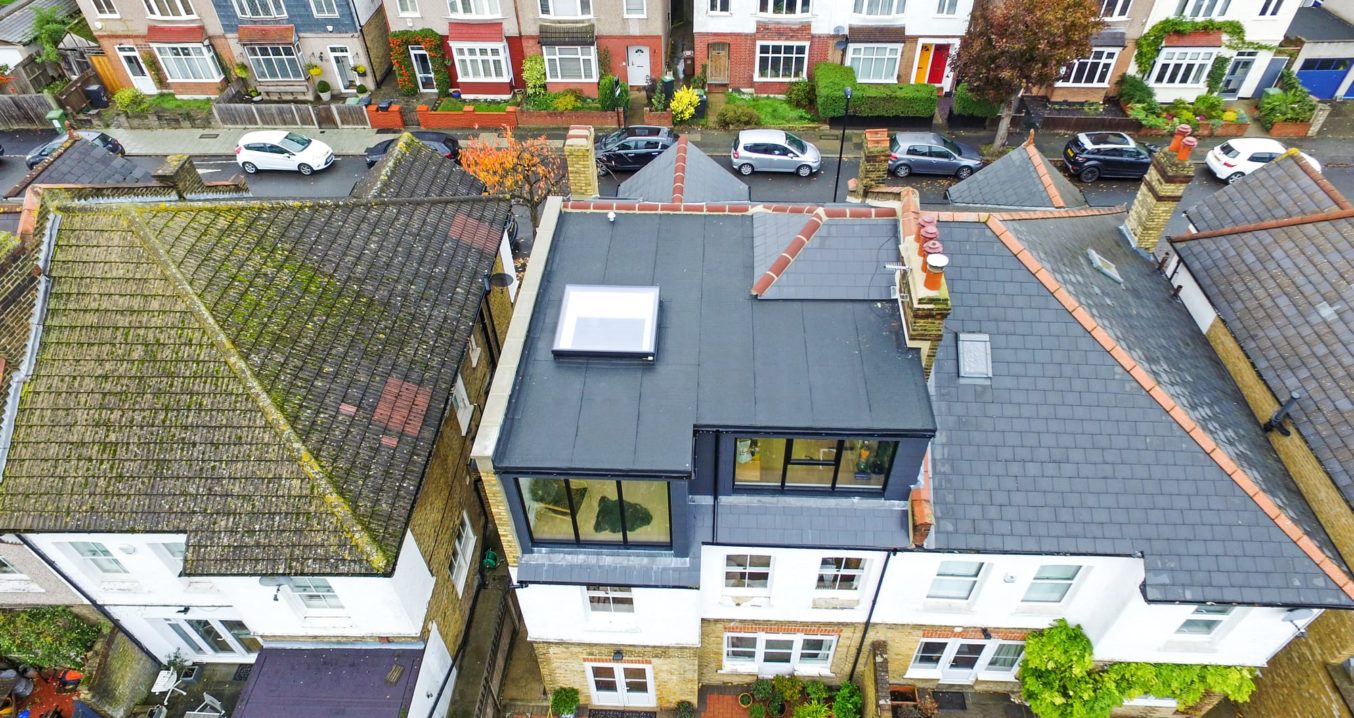
The majority of all loft conversions will have a flat roof constructed to them. The covering which makes them water tight can be achieved using various products, with 2 standing out as the industries norm. The first being a 3 layer felt systems and second GRP (glass reinforced plastic).
Three Layer Felt Systems have come a long way from the early days. They are no longer laid with hot bitumen and have stone chippings put on top. They had a stereotypical belief they were only good enough for your shed or garage. The products used today are a 3 layer membrane system, applied with the use of a gas gun. These felts come with a 20 to 30 year manufactures’ guarantee and have the ability to heal themselves with sunlight. Even if they are constantly submerged in water, this will not affect their performance. This application is favoured on a loft conversion as the product is fully bonded to the building and has a sound deadening property, which is essential with rainfall.
GRP roofing has been on the market for a number of years, but seems to have become fashionable in recently, not only due to the product price falling below the cost of the 3 layer system, but more importantly the ease of application. It has become so easy to install it could be classed as a DIY product. This product, if fitted correctly, will also carry a 20 to 30 year guarantee. The product is essentially a fibre class skin laid over a thin fibre membrane, with purpose made corners and drips that are stuck together. Although this can be used on a loft conversion, the biggest downside is the noise it generates when it rains. As 99% of lofts conversions are bedrooms, we would not advise the use of GRP. Furthermore, as this product is not fixed but laid on the roof decking, it is also prone to lifting in high winds.
Based on past experience the three layer felt system out performs the GRP on multiple levels.